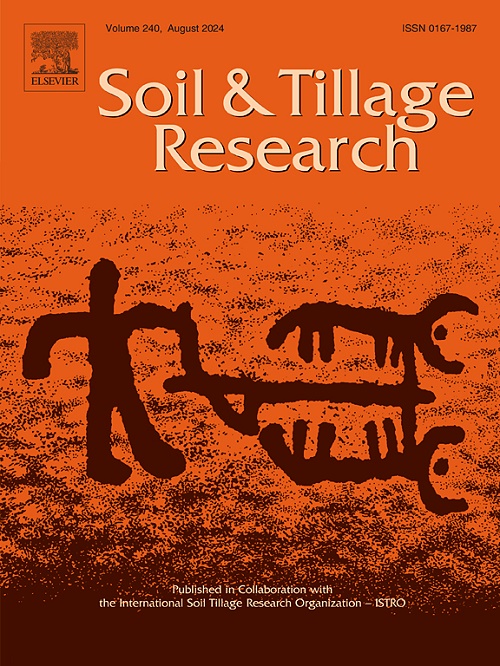无滑移比轮式漫游者纵向滑移和纵向滑移的统一建模
IF 6.1
1区 农林科学
Q1 SOIL SCIENCE
引用次数: 0
摘要
当行星漫游者穿越大面积的巨粒冰沉积物时,一些行星漫游者的车轮在斜坡上爬升时将经历纵向滑动,而另一些同时在斜坡下移动时将遭受纵向滑动。建立纵滑和纵滑的统一模型对于在线控制优化和地形力学参数估计具有重要意义。然而,当车轮运行状态由纵向滑移变为纵向滑移时,利用传统地形力学模型估计的相同地形的等效剪切变形模量不同,而估计的相同地形的修正沉降指数出现意外断裂。传统的地质体力学理论很难建立统一的模型。首先利用切换函数建立光滑车轮无滑移率的统一模型,命名为光滑统一模型。采用光滑统一模型估计的拉杆拉力与实验数据相比,相对误差小于19.7 %。在光滑统一模型中引入格鲁泽效应系数和等效半径,建立了格鲁泽车轮无滑移率的统一地形力学模型,并将其命名为格鲁泽统一模型。采用grouser统一模型估算的等效地形力学参数连续变化不间断,与实验数据相比,估算的拉杆拉力相对误差在22.37 %以内。最后进行了现场试验,验证了该统一模型的性能。本文章由计算机程序翻译,如有差异,请以英文原文为准。
Unified modeling of longitudinal slip and longitudinal skid for grouser-wheeled rovers without slip ratio
When planetary rovers traverse across extensive megaripple deposits, some planetary rover’s wheels climbing up a slope will experience longitudinal slip, while others moving down a slope simultaneously will suffer longitudinal skid. It is important to establish a unified model of longitudinal slip and longitudinal skid for online control optimization and terrain mechanical parameters estimation. However, when the wheel running state changes from longitudinal skid to longitudinal slip, the equivalent shear deformation modulus of a same terrain estimated using traditional terramechanics models is different, while the estimated modified sinkage exponent of a same terrain suffers an unexpected break. It is difficult to establish a unified model with traditional terramechanics theories. A unified model without slip ratio for smooth wheels was first established using a switching function, and named as smooth unified model. The relative error of the drawbar pull estimated using the smooth unified model is less than 19.7 % compared with the experimental data. And a unified terramechanics model without slip ratio for grouser wheels was established by introducing the grouser effect coefficient and equivalent radius to the smooth unified model, and named as grouser unified model. The equivalent terrain mechanical parameters estimated using the grouser unified model change continuously without break, and the relative error of the estimated drawbar pull can be captured within 22.37 % compared with the experimental data. Finally, field experiments were conducted to validate the performance of the grouser unified model.
求助全文
通过发布文献求助,成功后即可免费获取论文全文。
去求助
来源期刊

Soil & Tillage Research
农林科学-土壤科学
CiteScore
13.00
自引率
6.20%
发文量
266
审稿时长
5 months
期刊介绍:
Soil & Tillage Research examines the physical, chemical and biological changes in the soil caused by tillage and field traffic. Manuscripts will be considered on aspects of soil science, physics, technology, mechanization and applied engineering for a sustainable balance among productivity, environmental quality and profitability. The following are examples of suitable topics within the scope of the journal of Soil and Tillage Research:
The agricultural and biosystems engineering associated with tillage (including no-tillage, reduced-tillage and direct drilling), irrigation and drainage, crops and crop rotations, fertilization, rehabilitation of mine spoils and processes used to modify soils. Soil change effects on establishment and yield of crops, growth of plants and roots, structure and erosion of soil, cycling of carbon and nutrients, greenhouse gas emissions, leaching, runoff and other processes that affect environmental quality. Characterization or modeling of tillage and field traffic responses, soil, climate, or topographic effects, soil deformation processes, tillage tools, traction devices, energy requirements, economics, surface and subsurface water quality effects, tillage effects on weed, pest and disease control, and their interactions.
 求助内容:
求助内容: 应助结果提醒方式:
应助结果提醒方式:


